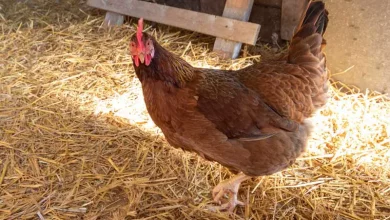Where do the big green tomato worms come from?

If you’re afraid of pests in your garden, finding a tomato hornworm on your plants may make you flee the vegetable patch. These fat caterpillars may consume all of the leaves on a tomato plant in a single day and are absolutely safe to humans. Even though tomato hornworms may grow to be rather large for an insect, they are experts at hiding in plain sight. Its green colour helps them blend in as they crawl about your tomato plants. Keep a watch out for them, however, so they don’t spoil your tomato harvest. These suggestions will teach you what to look for and how to get rid of tomato hornworms if you come across them.
Contents
What is a tomato hornworm?
A tomato hornworm is the larval stage of the hawk moth, also known as the hummingbird moth. The moths emerge from the soil in late spring or early summer, then lay their eggs singly on the undersides of a host plant’s leaves. After approximately a week, the small caterpillars hatch and develop rapidly as they eat. They will be fully grown in three to four weeks. Fully developed hornworm larvae will fall to the ground, burrow in, and build a cocoon before developing into a moth.
What do tomato hornworms eat?
Tomato hornworms typically consume tomato plant leaves, although they will also consume potato, eggplant, and pepper leaves. They begin munching on the leaves at the plant’s top, resulting in leafless stalks. Fruit is also eaten by older hornworms.
How to Get Rid of Tomato Hornworms
Finding and eliminating hornworms from a plant early in their life cycle can assist assure a bumper tomato production. Caterpillars excrete dark green or black droppings when they eat. The droppings tend to accumulate on the lower leaves and are easily apparent. Inspect plants for feeding damage and droppings at least twice a week. If you see any, examine them carefully until you find the hornworms, which are generally nearby. Since the caterpillars eat all day, you may go hornworm hunting at any time of day.
Picking hornworms off the plant by hand is the easiest approach to get rid of them. To destroy the caterpillars, immerse them in soapy water. Put on gardening gloves if handling bugs isn’t your thing; remember, hornworms won’t hurt you and they aren’t poisonous. If you locate a hornworm, look for more of them once a day for the following 4 or 5 days. This increases your chances of collecting all of the caterpillars before they do severe harm.
Pesticides are not always essential. Tomato hornworms are mainly controlled by handpicking. Low risk pesticides (those that are least likely to harm non-target, beneficial insects like bees) include Bacillus thuringiensis (Bt), spinosad, and insecticidal soap. All three of these insecticides are most effective on little caterpillars and should only be used if the afflicted plants are not already severely damaged.
Preventing a Hornworm Infestation
Remove adjacent weeds to discourage hornworms from taking up home. With fewer weeds, there are fewer locations for hornworm moths to deposit their eggs. Another successful preventative approach is to till the soil after harvest, which kills burrowing caterpillars and their cocoons.
Many natural enemies of tomato hornworms may also be used. Predatory insects, such as lady beetles and green lacewings, often consume hornworm eggs and juvenile caterpillars. Hornworms serve as hosts for tiny parasitic wasps that are not hazardous to humans. One telltale sign of their presence is a hornworm with what looks like white grains of rice sticking out of its back (shown above). These are wasp larval cocoons that have eaten on the caterpillar. New parasitic wasps will soon hatch out of them, so leave any parasitized hornworms in place. Avoid using pesticides to help these busy, useful insects.





